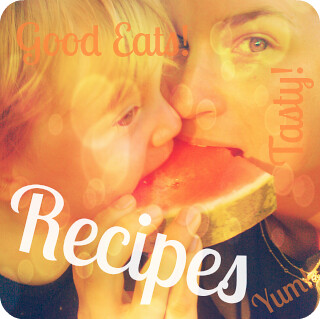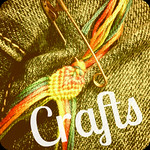
Have you heard this term? Mama cloth = reusable cloth menstrual pads that are eco-friendly alternatives to disposable pads. This may sound gross to some, but to others it will sound intriguing. If you're a tampon-all-the-way type of girl because you can't stand to use pads, this is not for you. But if you use pads already, this is a very awesome option that I highly recommend.
Let me interrupt this story by telling you (in case you didn't know already) that I use cloth diapers for my daughter - I am not easily icked out by poop and pee, plus I consider myself a tree hugger/hippie at heart, so I am always interested in ways that I can contribute to saving our environment.
 Tampons make me more crampy than usual and that makes me cranky, so I only use them when completely necessary (like when I'm swimming). Consequently, I'm a pad girl most of the time when I'm on my period. But disposable pads are SUPER irritating to me - chafing in a very sensitive place makes an unpleasant time of month even more unpleasant. I knew there had to be a solution...
Tampons make me more crampy than usual and that makes me cranky, so I only use them when completely necessary (like when I'm swimming). Consequently, I'm a pad girl most of the time when I'm on my period. But disposable pads are SUPER irritating to me - chafing in a very sensitive place makes an unpleasant time of month even more unpleasant. I knew there had to be a solution...As I shopped around for cloth diapers, I saw "Mama Cloth" listed on the side bar of a couple of sites. One day I finally clicked on it and my answer was found! I was totally intrigued, but wary. I liked the idea of cloth against my skin instead of disposable pads (which is one of the reasons I chose cloth diapers vs. disposables), but I wasn't sure about the "cleanliness" of the whole thing. But since cloth diapers have worked out so well, I figured I'd give it a try.
When I received my pads in the mail, I tossed them in with a load of diapers to pre-wash them. Ultimately, that wasn't enough to properly prepare the pads, so I had issues. My first test failed - my pad leaked while I was at work, and then when I washed it, it didn't come clean completely (I will spare you the stinky details).
You MUST pre-wash them in HOT water (I'd suggest 2-3 times to be completely honest) or boil them once for about 15-20 minutes. This process will remove the temporary basting spray (sewing adhesive) that is used in manufacturing and will help to achieve maximum absorbency from the materials. Boiling worked better for me, so that's my ultimate suggestion. My single hot wash didn't work... at all.
Round two, after I had boiled the pads to strip them, was a total success. I was SO much more comfortable than disposable pads, and I didn't encounter any leaks! I honestly almost forgot that I was on my period! This is SERIOUSLY NOT GROSS like I thought it might be, and I'd tell you if it was. I swear, it's just as easy as dealing with disposable maxi pads, ESPECIALLY if you cloth diaper because you can wash them all together. After the pad is used, just fold the ends in toward the center and snap the wings around it to keep the mess on the inside. Then throw it in the hamper or diaper pail. Washing is a breeze - I throw my pads in with my cloth diapers, but you can wash them with your regular laundry too - trust me, it won't sully your other laundry!
My cloth diaper/mama cloth washing method: cold soak with Bac-Out overnight in the washer, then add about 1/4 of the amount of detergent you'd normally use in a load of laundry and let that cycle run. Then run a second cycle with the same amount of detergent, but using HOT water. Then tumble dry with wool dryer balls (no dryer sheets please) or line dry. That's it! If any stains linger, set the pads in the sun and the stain will fade out. Down the road, if you have any absorbency or smell issues, detergent build up is likely the culprit. Just boil your pads again for 15-20 minutes to "strip" them of the build up. Problem solved!
The initial investment into mama cloth will set you back at least $100 - I suggest changing pads at least every 4 hours, meaning you need a minimum of 6 per day, with a backup set of 6 for when the first set is in the wash, for a total of 12 pads. You can also invest in cloth panty liners, or just keep using the regular pads until you're in the clear. I think the comfort plus the eco-friendly nature of mama cloth makes up for the cost. I'm sold!
Look for my review of Blossom Pads mama cloth on SIMPLE Reviews on Leap Day ~ February 29, 2012.
Cheers!
>^..^<









